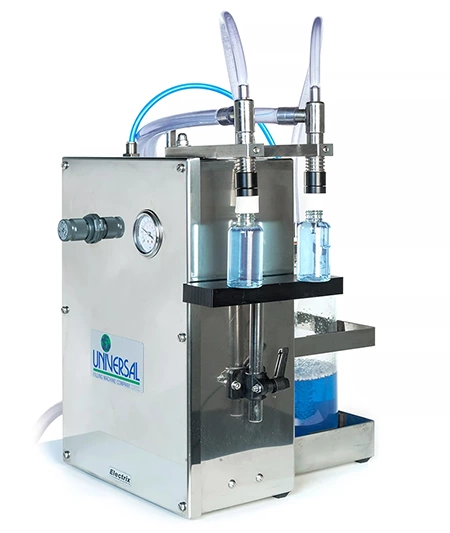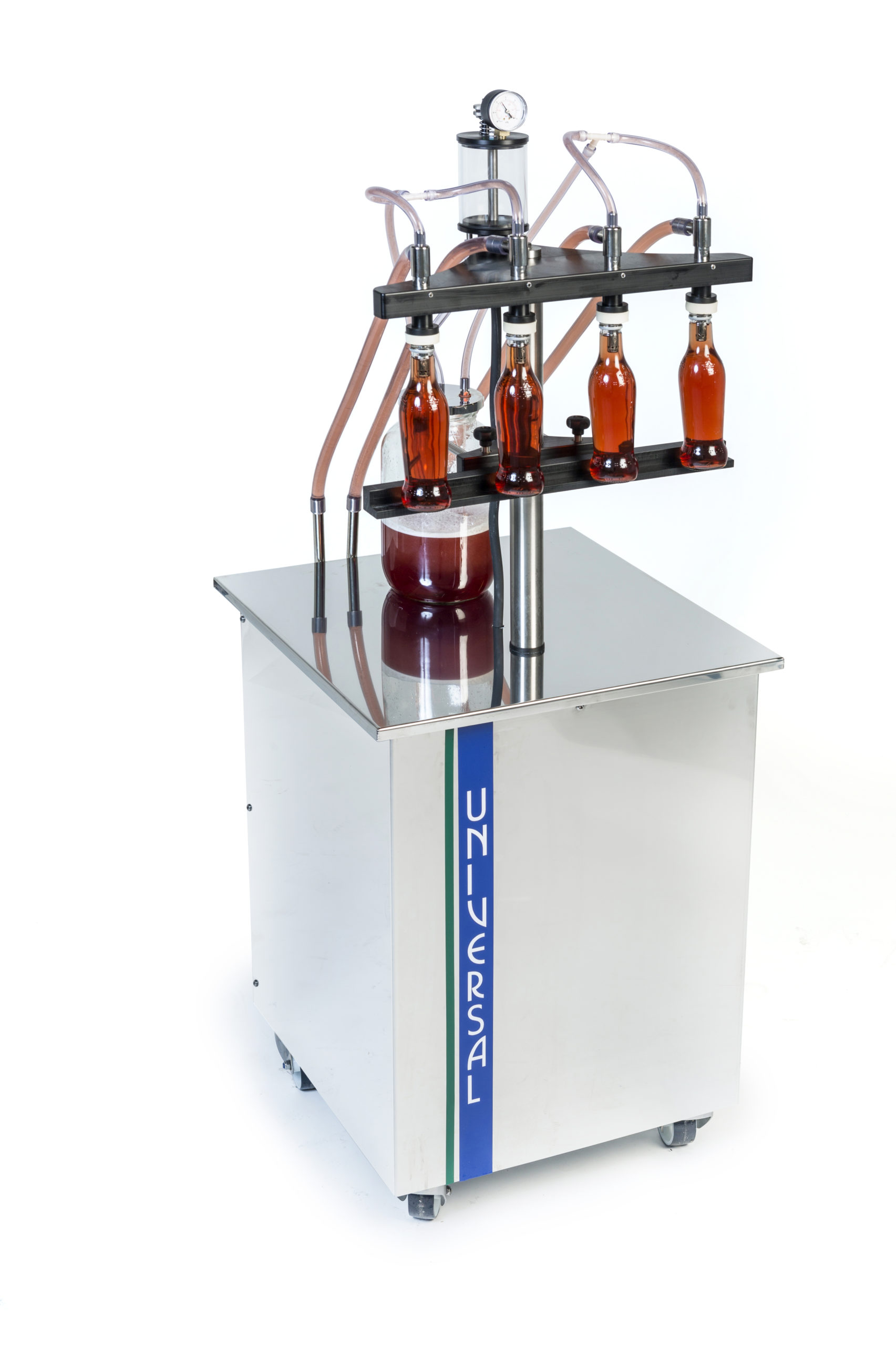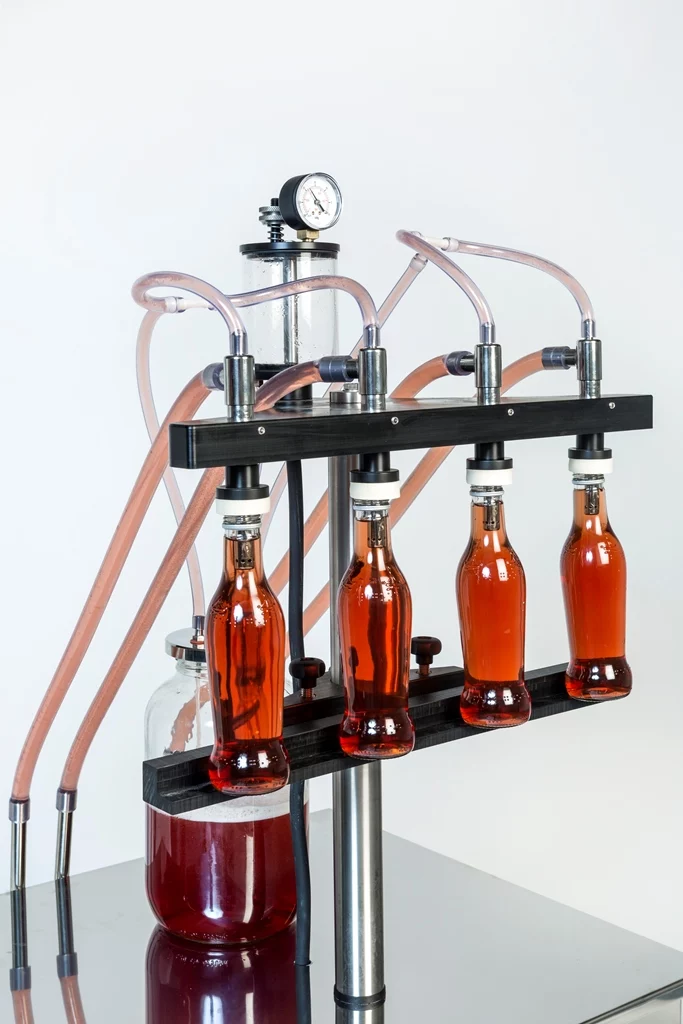Vacuum Level Filling is a surprisingly simple filling technology and is ideal for filling free-flowing liquids into glass, metal or rigid plastic containers.
Vacuum level filling is widely used with wines, spirits, edible oils, perfumes and fragrances, and is ideal for:
- Low viscosity liquids of up to approximately 90 centipoise, or the consistency of olive oil, for example.
- Bottles which are rigid enough to withstand a vacuum without collapsing, such as glass, metal or rigid plastic bottles.
Visually, all bottles are filled to exactly the same height, yet due to the manufacturing process, glass bottles have notoriously inconsistent wall and base thicknesses, making their internal volumes vary; vacuum filling overcomes this.

What are the advantages of vacuum filling bottles?
No moving parts
Our Vacufill and Easifill semi-automatic vacuum level filling machines contain almost no moving parts, making them incredibly reliable, easy to clean and simple to maintain while offering a significant cost saving over other filling methods.
Fill any bottle size
The size of bottle is only constrained by whether it will fit within the physical dimensions of the adjustable bottle rest on the machine.

No buttons, switches or levers
Filling starts automatically, as soon as the bottle is positioned and continues to draw liquid until the correct fill level is achieved, upon which, the bottle can be removed and replaced by the operator. Excess liquid is drawn into a glass overflow jar which can then be reused.
It’s rapid
The 4-headed Easifill machine shown here can be continuously fed bottles in sequence, each bottle starting to fill as soon as it is positioned, so by the time you have the fourth bottle in position, the first bottle is likely to be full, or very nearly full, and ready to be replaced with the next empty bottle.
The visual aspect
Vacuum filling machines are extensively used to fill transparent or nearly transparent bottles which are going to be displayed on shelving for retail purposes.
In most cases, this means than numerous identical bottles of the same product are neatly sited next to each other on the shelf with the label facing forward, looking their very best. In this environment, the bottles’ contents, and the level it is filled to, needs to be identical from one bottle to the next.
Due to the limitations of their manufacturing process, many glass bottles will have a thicker or thinner base and sides than others in the same batch, resulting in inconsistent internal volumes. Filling such bottles using a volumetric filling system fills with an identical volume of liquid which results in the level of the fill varying from one bottle to another.
Vacuum filling systems such as the Vacufill and Easifill (and our fully automatic Posivac) overcome this inconsistency by filling bottles to a predetermined height within the bottle. This level is set by the distance of the nozzle’s sealing rubbers above the suck-back tube withing the nozzle’s body.
How does Vacuum Level Filling work?
Vacuum filling nozzles have a secondary, small-diameter tube within their main tube, which exits through the side of the main nozzle tube, near its tip. The other end of this small tube is connected to the vacuum side of the machine via an excess liquid capture jar, and constantly draws a vacuum all the time the machine is switched on.
When a bottle is positioned on to the nozzle and an airtight seal is created with the nozzle sealing rubbers, this vacuum creates lower-than-atmospheric pressure within the bottle.
The larger diameter tube which forms the main body of the filling nozzle is connected to the liquid supply via hoses.
The reduced pressure within the bottle forces the liquid to be drawn along its supply hose, through the main body of the nozzle and in to the bottle. The vacuum continues to draw liquid in to the bottle until it reaches the height of the smaller vacuum tube in the side of the main nozzle’s body. At this point, the smaller ‘Suck Back Tube’ within the nozzle starts to draw excess liquid, rather than air, and diverts any excess to the excess liquid capture jar at a greatly reduced speed, due to the small diameter of the Suck Back Tube.
The Excess Liquid Capture Jar is also airtight and forms part of the vacuum system. Periodically, the machine can be switched off and the contents of the jar can be returned to the liquid supply vessel for re-use.

Request further information about this machine
[caldera_form id=”CF55b20eb11486f”]